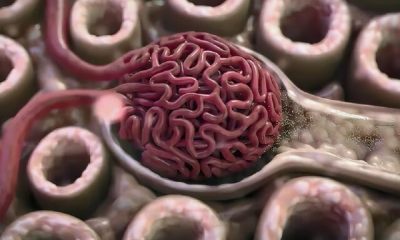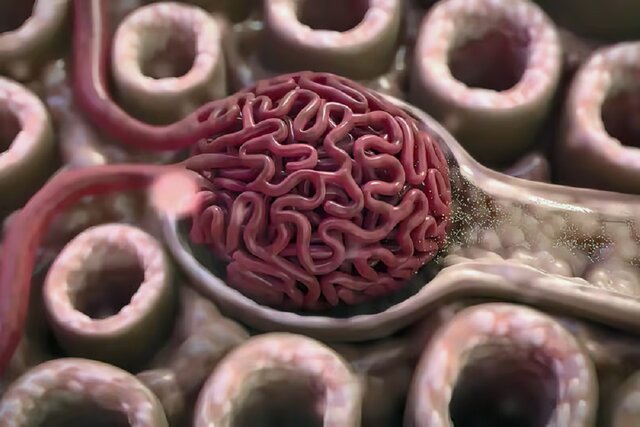Alzheimer’s is commonly known as a memory-robbing disease that initially presents with symptoms of forgetfulness, difficulty remembering new events, and increased confusion. However, some people may experience a lesser-known early warning sign.
Strange visual symptoms in Alzheimer’s patients
Alzheimer’s may go undiagnosed for years if a person only goes to their eye doctor because so few people know about it.
According to the Daily Mail, doctors conducted the first large-scale international study, led by the University of California, San Francisco, on the phenomenon known as posterior cortical atrophy (PCA). For this study, researchers looked at the medical records of more than 1,000 patients with posterior cortical atrophy in 16 different countries.
Visual-spatial symptoms of posterior cortical atrophy affect patients about five or six years earlier than patients with the more common type of Alzheimer’s.
While the exact number of people with posterior cortical atrophy is unknown, researchers estimate that this type may account for up to 10 percent of Alzheimer’s cases, putting the number of Americans with the disease at nearly 700,000.
Posterior cortical atrophy is a specific subtype of Alzheimer’s disease, and not all Alzheimer’s patients experience these symptoms, which include difficulty reading and doing math, using everyday objects, judging distances, and recognizing faces. Memory problems may become more apparent as the disease progresses.
The average age at which symptoms usually appear is 59 years, which is 6 years earlier than the average age at which Alzheimer’s disease is diagnosed.
These symptoms can affect people who have no other memory problems, leading some to think that the problems are not neurological. Vision loss is a side effect of the general aging process, and many adults in their 50s and 60s probably attribute vision problems to their aging and choose to use glasses instead of seeking medical care.
A lot of time may have passed before they finally see an ophthalmologist. Seeing abnormalities in the results of a person’s vision test, the ophthalmologist refers him to a neurologist to diagnose the problem.
The average time it takes from the first experience of unusual vision symptoms to the eventual correct diagnosis is less than four years.
Dr. Marianne Chapleau, one of the authors of the paper and a researcher in the Department of Neurology at the Center for Memory and Aging, says: We need more knowledge about posterior cortical atrophy so that it can be flagged by doctors.
Read More: Predicting Alzheimer’s with a wristband!
Most patients see their optometrist when they experience visual symptoms and may be referred to an ophthalmologist who may also not recognize posterior cortical atrophy. We need better tools in clinical settings to identify these patients early and treat them.
In this study, researchers measured the levels of two hallmarks of Alzheimer’s disease, tau and amyloid proteins. Amyloid-beta accumulates in the brain, forming deposits that are believed to cause inflammation in the body and disrupt communication between brain cells.
Meanwhile, tau normally helps stabilize the internal structure of nerve cells in the brain. But in Alzheimer’s, abnormal chemical changes cause tau to detach from nerve cells and reattach to other tau proteins, forming strands that eventually tangle.
People with posterior cortical atrophy had similar levels of tau and amyloid plaques in their brains as people with Alzheimer’s.
While there is no known cure, the common pathologies that Alzheimer’s and posterior cortical atrophy share mean that posterior cortical atrophy patients may benefit from participating in a clinical trial for one of several drugs in development.
“A better understanding of posterior cortical atrophy is critical both to improving patient care and to understanding the processes that lead to Alzheimer’s disease,” said Gil Rabinovici, MD, senior author of the study and director of the Alzheimer’s Disease Research Center.
He added: It is very important that doctors learn to recognize the syndrome so that patients can receive the correct diagnosis, counseling, and care.
From a scientific point of view, we really need to understand why Alzheimer’s specifically targets the visual parts of the brain rather than the memory. Our study showed that 60% of patients with posterior cortical atrophy were female, so a better understanding of why they seem more susceptible is an important area of future research.
Their research was published in the journal Lancet Neurology.



 Technology9 months ago
Technology9 months ago


 Technology10 months ago
Technology10 months ago


 Technology9 months ago
Technology9 months ago


 Technology10 months ago
Technology10 months ago


 Humans1 year ago
Humans1 year ago


 AI1 year ago
AI1 year ago


 Technology10 months ago
Technology10 months ago


 Technology11 months ago
Technology11 months ago



























